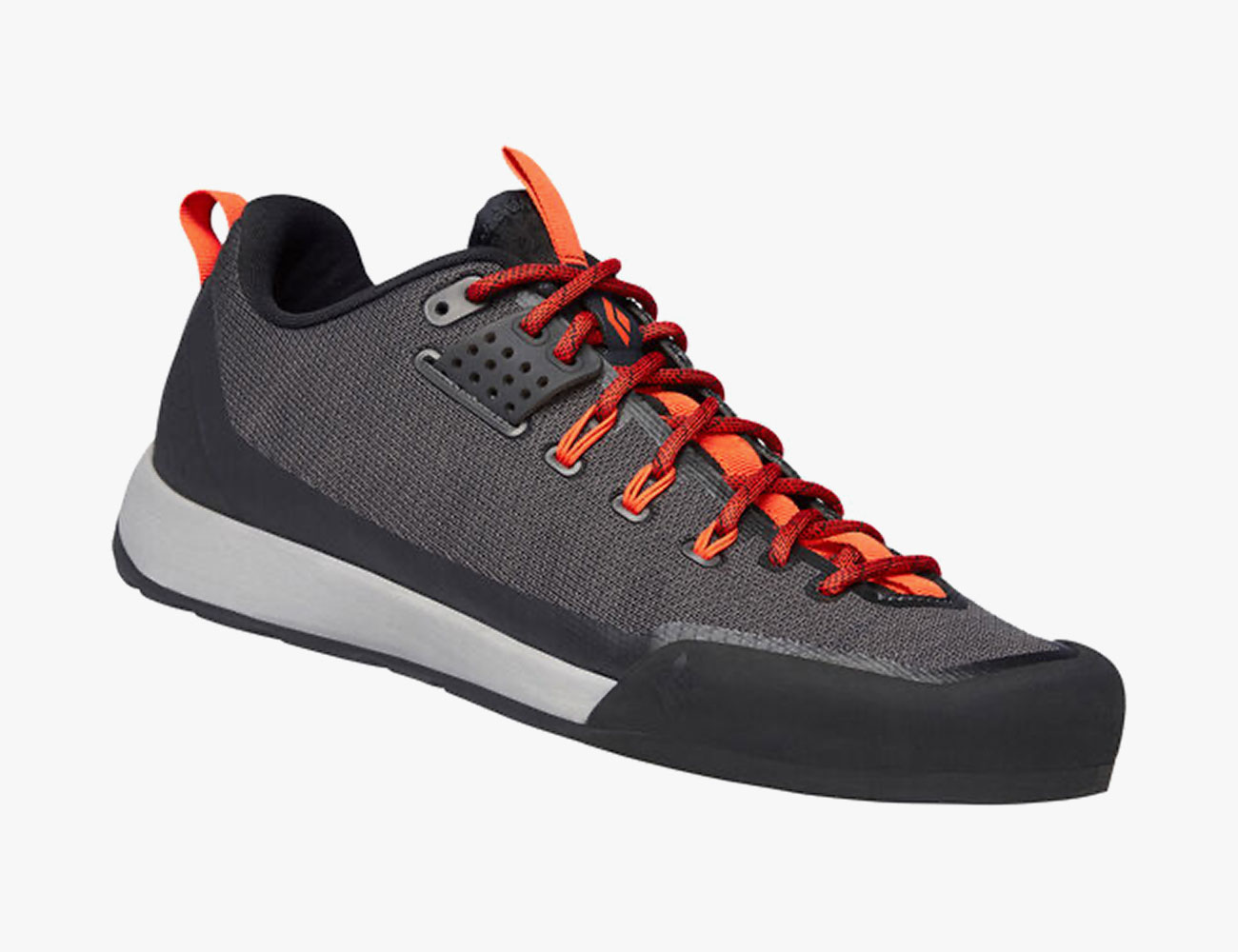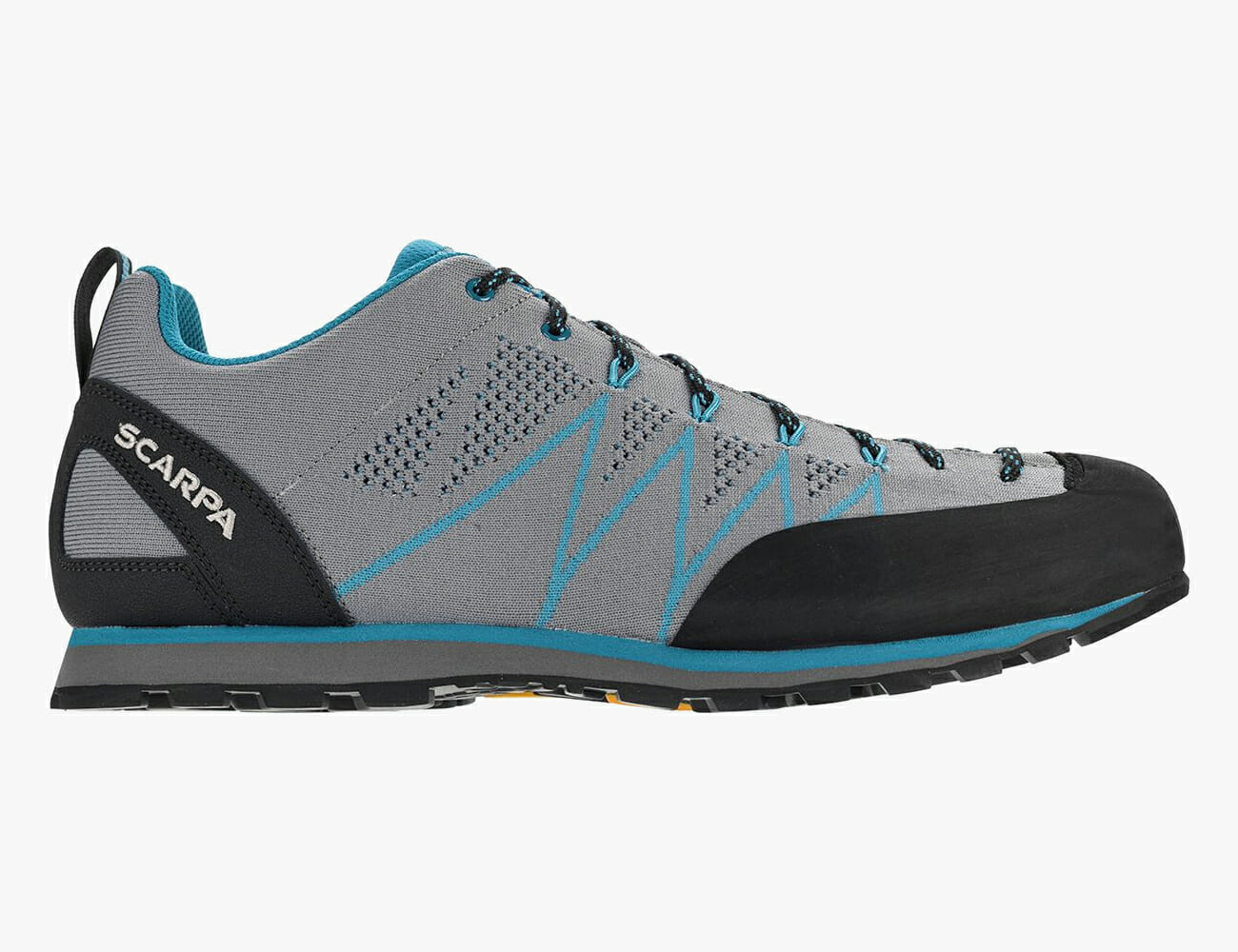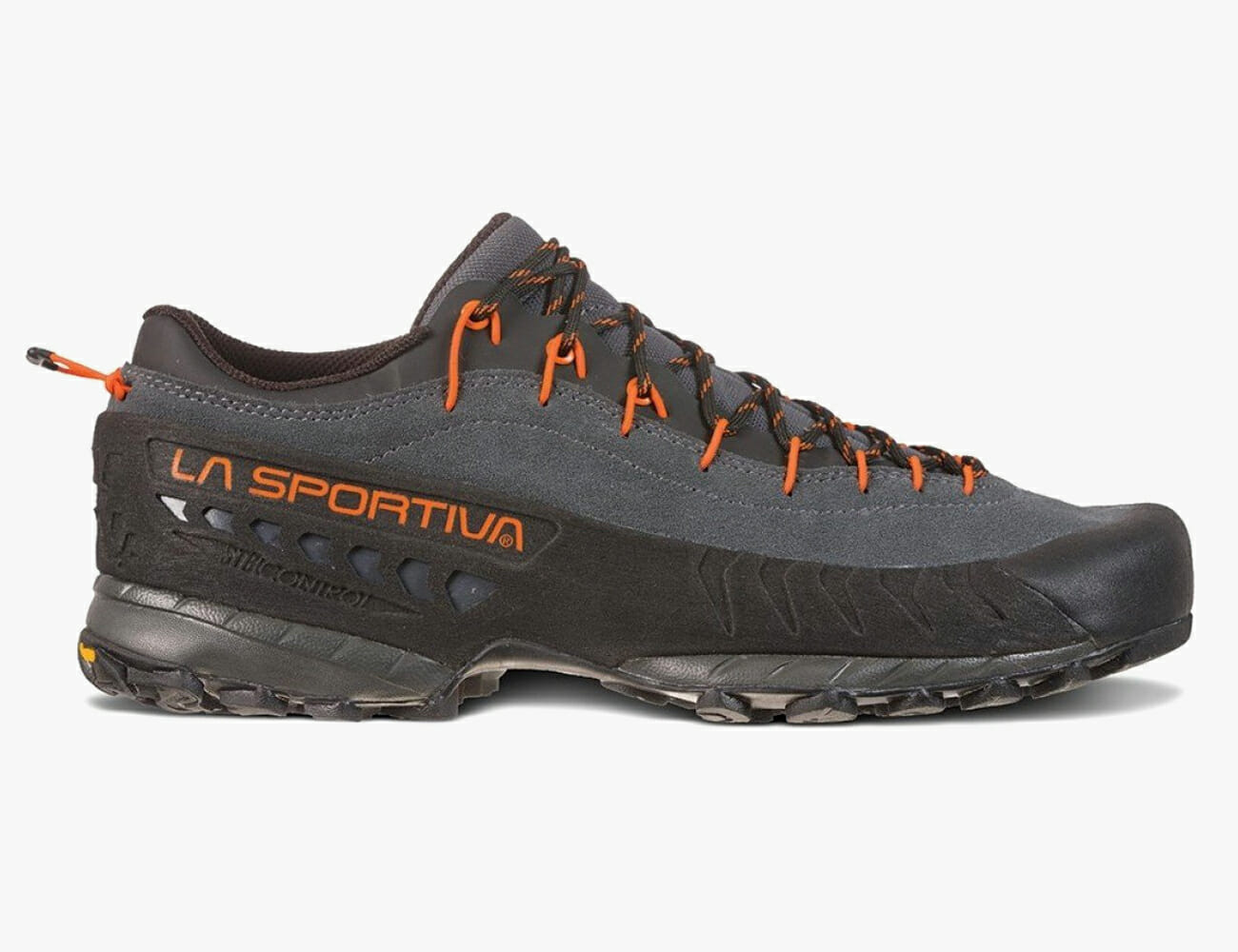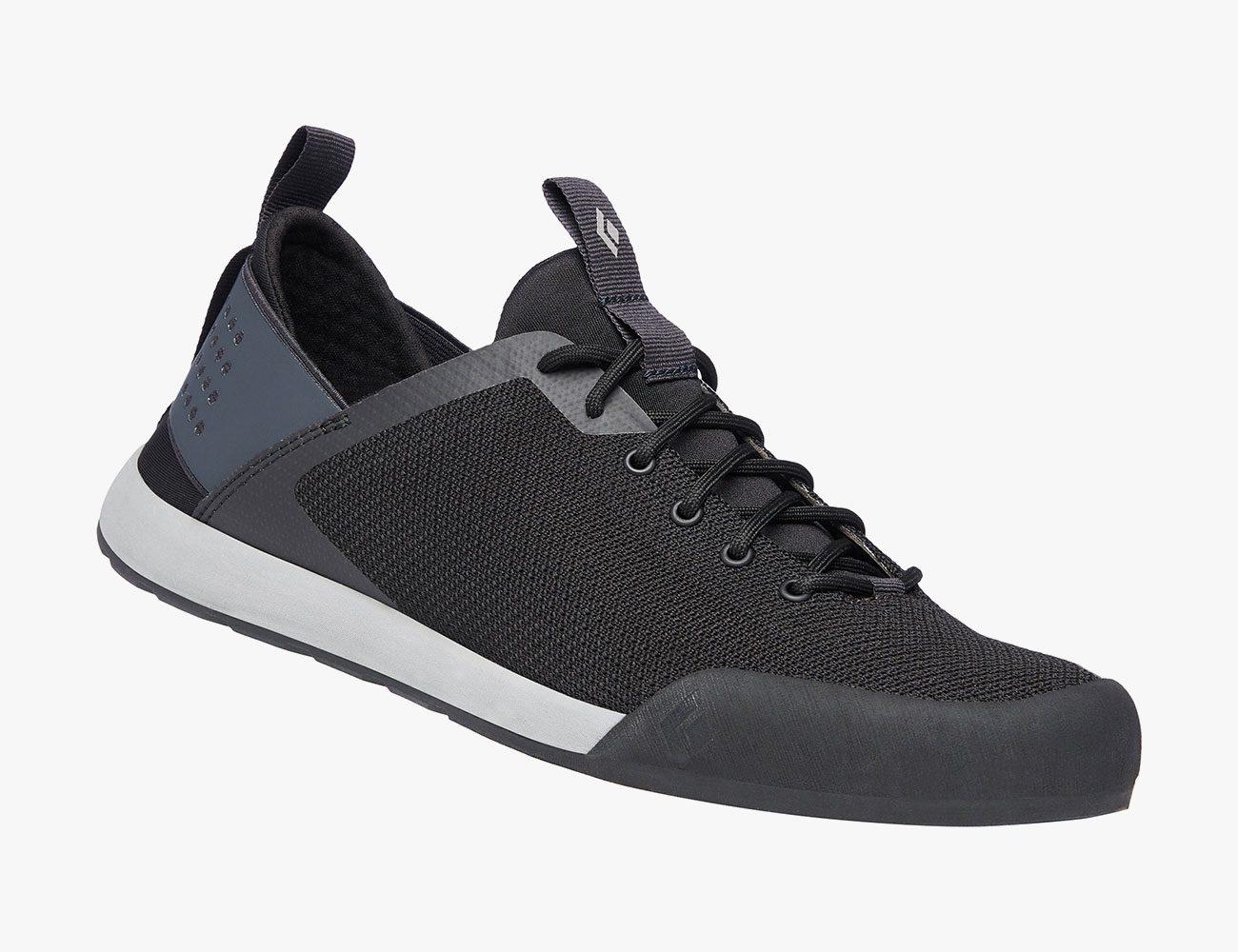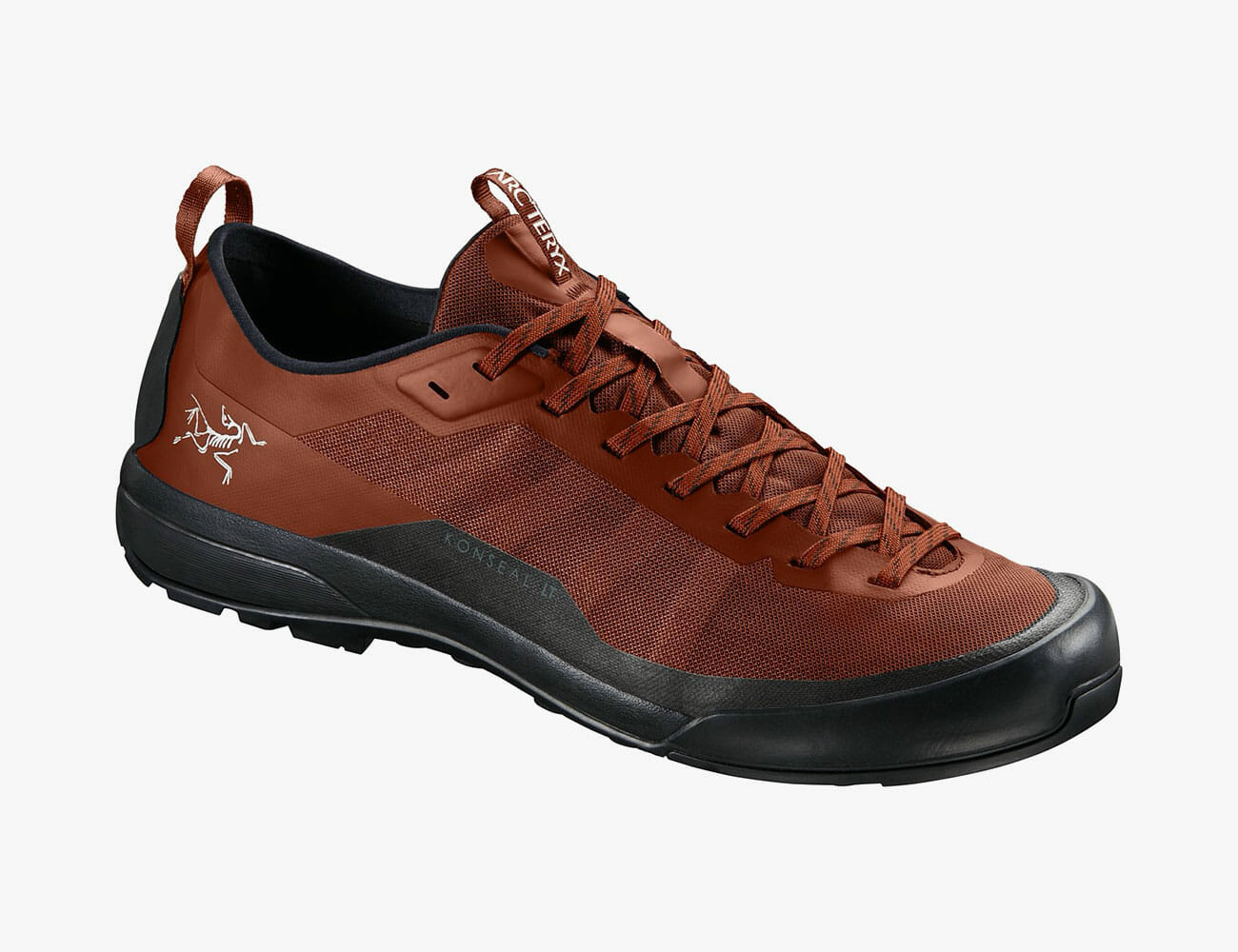Most people fall into one of two camps when it comes to hiking footwear. You either prefer the support and protection of a full-on hiking boot or the comfort and flexibility of a trail runner. However, somewhere in the middle sits a class of technical mountain shoes only a few people outside the climbing world appreciate – the approach shoe.
Perhaps the most versatile class of mountain footwear, the approach shoe is a tough-as-nails, below-the-ankle blend of hiking boot, trail runner and climbing shoe. Their biggest advantage, the outsole, is made with sticky climbing shoe grade rubber, meaning they stick to rock like glue.
So, if you seek footwear that can nimbly navigate, say, the canyons of Moab — and seamlessly transition to a bar crawl in town (ah, remember those?) — look no further than the following nine tried-and-true approach shoes. The best part? Several just happen to be on sale right now.
Black Diamond Technician
For approaches that require more vertical than horizontal movement, behold this good-looking, technical approach shoe. Thanks to the ultra-sticky BlackLabel-Mountain rubber, you’ll push through 5th-class terrain fast with complete confidence. Underfoot, the low-profile keeps you close to the ground, ideal for precise foot placement on micro footholds and smearing on slabby rock. Just be sure to size way up, perhaps a full size, as they run small.
Outsole: BlackLabel-Mountain rubber
Weight: 10oz
Scarpa Crux Air
The Scarpa Crux Air may not have the durability of its tough-skinned sibling the Scarpa Crux, but what it lacks in durability it makes up in comfort. Made with a synthetic knit upper that’s more breathable than any other approach shoe tested, the Crux Air admittedly isn’t the best pure climber. However, it’s my favorite casual kicking around town shoe. If I could only pack one shoe for dual-duty mid-summer dry weather approaches and après festivities, this is the one for sure.
Outsole: Vibram Megagrip with Vibram Vertical Approach climbing zone
Weight: 12.2oz
La Sportiva TX4
For a good mix of support and comfort for heavy load approaches and hikes without the ultra bulky, stiff feel of a hiking boot, the TX4 is your go-to. The durable leather upper is partially wrapped with a thick band of rubber to help with torsional rigidity when the footing ahead is rocky and uneven. Underfoot, the outsole features La Sportiva’s Trail Bite Heel Braking Platform, a multi-directional deep lug pattern that’s ideal for wet, muddy and loose rocky conditions, making these the best approach shoe for the non-climber who wants more of a hiking shoe.
Outsole: Vibram Mega-Grip Traverse with Impact Brake System
Weight: 13oz
Black Diamond Session
Not all approaches include burly treks through rock ridden fields. These lace-up, easy slip-ons are designed for tamer, more concrete-oriented approaches like a trip to the local gym or urban boulder field. You’ll be hard-pressed to find a more comfortable dual duty technical climber and street shoe. The stretchy sock-like bootie allows for easy on/off sporting a collapsible heel, yet they’re form-fitting and secure enough to climb and hike with confidence. Bottom-line: if you climb in a gym these are must own.
Outsole: BlackLabel-Mountain rubber
Weight: 10oz
Arc’teryx Konseal LT
At 9.5 ounces, this featherweight offers a minimalist feel while still providing support and protection for burly approaches through rugged terrain. The flexible Vibram Megagrip sole molds to shifting ground for a shoe that’s both surefooted and agile. The tough-skinned mesh upper is airy and comfortable, while the integrated lacing system anchors your foot firmly in the driver’s seat. The coolest feature – a collapsible heel for easy clog-like on and off – makes it perfect for kicking around your campsite or belaying.
Outsole: Vibram Mega-Grip
Weight: 9.5oz
Lowa Approach Pro GTX Low
Made by a leading German hiking boot maker, these Via Ferrata-inspired approach shoes are damn near indestructible, making them suitable for just about any dry or wet mountainous adventure. Their hiking boot level of stiffness and support gives them an edge on most approach shoes for long alpine days with a heavy pack, but less so as an everyday shoe. Causal outdoor enthusiasts should look elsewhere; these are made for experienced mountain goers. Consider going up by half a size, as the Euro sizing equivalent tends to run a little small.
Outsole: Vibram Rock Trac
Weight: 15.8oz
Five Ten Guide Tennie
Iff you spot someone wearing the Five Ten Tennie, it’s safe to assume they’re a rock climber. Why’s that? They’re hands down one of the best approach shoes for technical rock climbing. More of a performance lifestyle approach shoe that feels like a skate shoe, a long hike isn’t a strong suit of the Tennie. Still, if you’re sticking to shorter 5th class approaches that involve technical climbing, these are the shoes you’ll want.
Outsole: Five Ten Stealth S1
Weight: 11.5oz
Arc’teryx Konseal FL
Fast and light is how Arc’teryx classifies the Konseal FL, and I agree. With a weight that’s lighter than most trail runners, it’s made to move quickly and confidently over rocky terrain; so much so, they’re almost suitable for short stints of running if needed. The clean and minimalist upper looks sleek while adding a layer of protection from rock and moisture. Made with a straight last and smooth synching lacing system, it’s easy to get a snug secure fit, however, those with wide feet may want to look elsewhere, as they do run narrow.
Outsole: Vibram Mega-Grip
Weight: 10.6oz
Butora Wing
One of the lesser-known brands is South Korean climbing company Butora. The Wing fits into the performance lifestyle niche, rivaling the Five Ten Guide Tennie shoes with its technical rock climbing skills. It’s better suited as a short technical approach shoe where movement over rock is more vertical than horizontal. If you enjoy skateboard-like aesthetics with solid technical skills, check these out. Just make sure to go up half to a full size, as they run small.
Outsole: NEO Fuse with NEO Flat climbing zone
Weight: 16.6oz
Before You Buy…
Approach shoes are quickly gaining mainstream attraction for their killer mountain aesthetics and versatility on and off the trail. To help point you in the right direction here’s what you want to think about before buying.
More Hiking or Climbing?
While all approach shoes will excel over rocky terrain, there remains quite a bit of variability on ideal application. For non-climbers whose primary application is day hikes, I suggest leaning toward hiking-focused approach shoes such as the La Sportiva TX4, Scarpa Crux Air or Arc’teryx Konseal. Climbers need to be a bit more selective based on terrain.
“First figure out what you are going to use it for. Flat approaches? Burly switchbacks? Fourth class ridges?,” Francis Sanzaro, Rock and Ice magazine editor, suggests. “There are really two types of approach shoes — those for the crag, and the kind you want in the mountains. For the crag — I’m looking for comfort, easy on, easy off and good rubber,” such as the Five Ten Tennie or Butora Wing. “For the mountains, you need a workhorse, a real approach shoe. The rubber needs to be good and sticky in wet environments. The stitching and materials need to be very durable, for talus hopping and such. It also needs to climb and have cushion for heavy loads. If I can’t climb 5.7 in an approach shoe, it’s destined for the crag, not the mountains.” Think the Lowa GTX Pro or La Sportiva TX4.
Note the Outsole Pattern
A lot can be gleaned by looking at the bottom of approach shoes. First off, all approach shoes should have a smooth patch of rubber under the toes. If they don’t, they’re not true approach shoes. This area, which is often coined the “climbing zone,” helps with edging and smearing while climbing. Next, take note of the lug pattern. If it’s relatively flat, such as the small circular pattern seen in the Five Ten Tennie, they’re better suited for pure rock surfaces and kicking it around town. More surface area touching the ground means better grip on the rock, but less grip on loose gravel or dirt. If the lug pattern is toothier and more aggressive such as the La Sportiva TX4, it will make a great hiker over dirt and looser terrain.
Finding the Ideal Fit
Fit depends, again, largely on your intended use – climbing vs. hiking. As with any shoe, always wear your intended socks when trying on. If you’re primarily going to use them for day hikes and kicking around town, look for a fit like you would for a hiking boot or trail runner – leave some space to allow your feet to swell. A thumb-width space in the front is a good guide. If climbing performance is your goal, you’ll want a much tighter fit, your toes edging closer to the front of the shoe for better sensitivity when climbing vertically.



